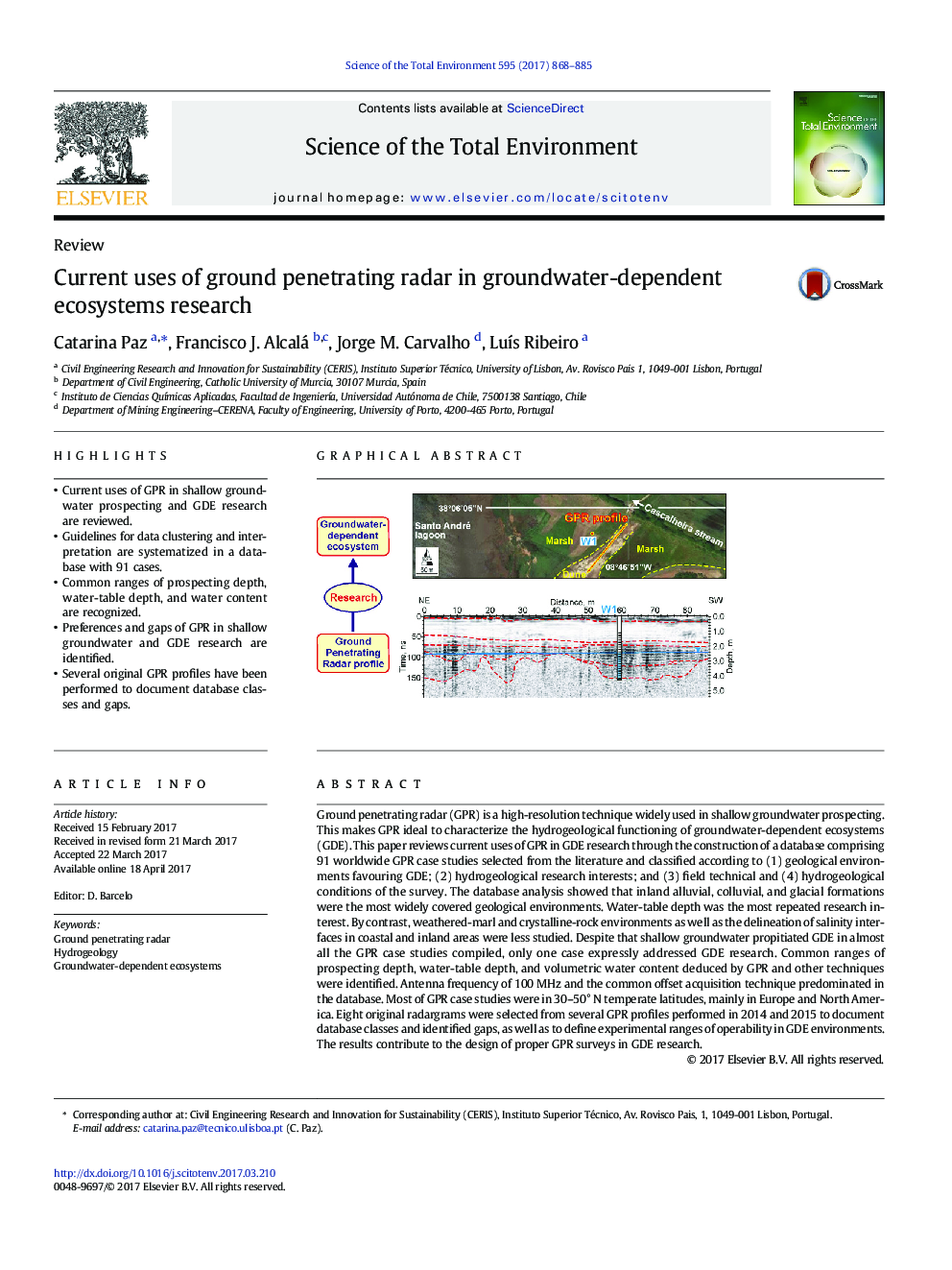| کد مقاله | کد نشریه | سال انتشار | مقاله انگلیسی | نسخه تمام متن |
|---|---|---|---|---|
| 5751342 | 1619701 | 2017 | 18 صفحه PDF | دانلود رایگان |
- Current uses of GPR in shallow groundwater prospecting and GDE research are reviewed.
- Guidelines for data clustering and interpretation are systematized in a database with 91 cases.
- Common ranges of prospecting depth, water-table depth, and water content are recognized.
- Preferences and gaps of GPR in shallow groundwater and GDE research are identified.
- Several original GPR profiles have been performed to document database classes and gaps.
Ground penetrating radar (GPR) is a high-resolution technique widely used in shallow groundwater prospecting. This makes GPR ideal to characterize the hydrogeological functioning of groundwater-dependent ecosystems (GDE). This paper reviews current uses of GPR in GDE research through the construction of a database comprising 91 worldwide GPR case studies selected from the literature and classified according to (1) geological environments favouring GDE; (2) hydrogeological research interests; and (3) field technical and (4) hydrogeological conditions of the survey. The database analysis showed that inland alluvial, colluvial, and glacial formations were the most widely covered geological environments. Water-table depth was the most repeated research interest. By contrast, weathered-marl and crystalline-rock environments as well as the delineation of salinity interfaces in coastal and inland areas were less studied. Despite that shallow groundwater propitiated GDE in almost all the GPR case studies compiled, only one case expressly addressed GDE research. Common ranges of prospecting depth, water-table depth, and volumetric water content deduced by GPR and other techniques were identified. Antenna frequency of 100 MHz and the common offset acquisition technique predominated in the database. Most of GPR case studies were in 30-50° N temperate latitudes, mainly in Europe and North America. Eight original radargrams were selected from several GPR profiles performed in 2014 and 2015 to document database classes and identified gaps, as well as to define experimental ranges of operability in GDE environments. The results contribute to the design of proper GPR surveys in GDE research.
484
Journal: Science of The Total Environment - Volume 595, 1 October 2017, Pages 868-885
